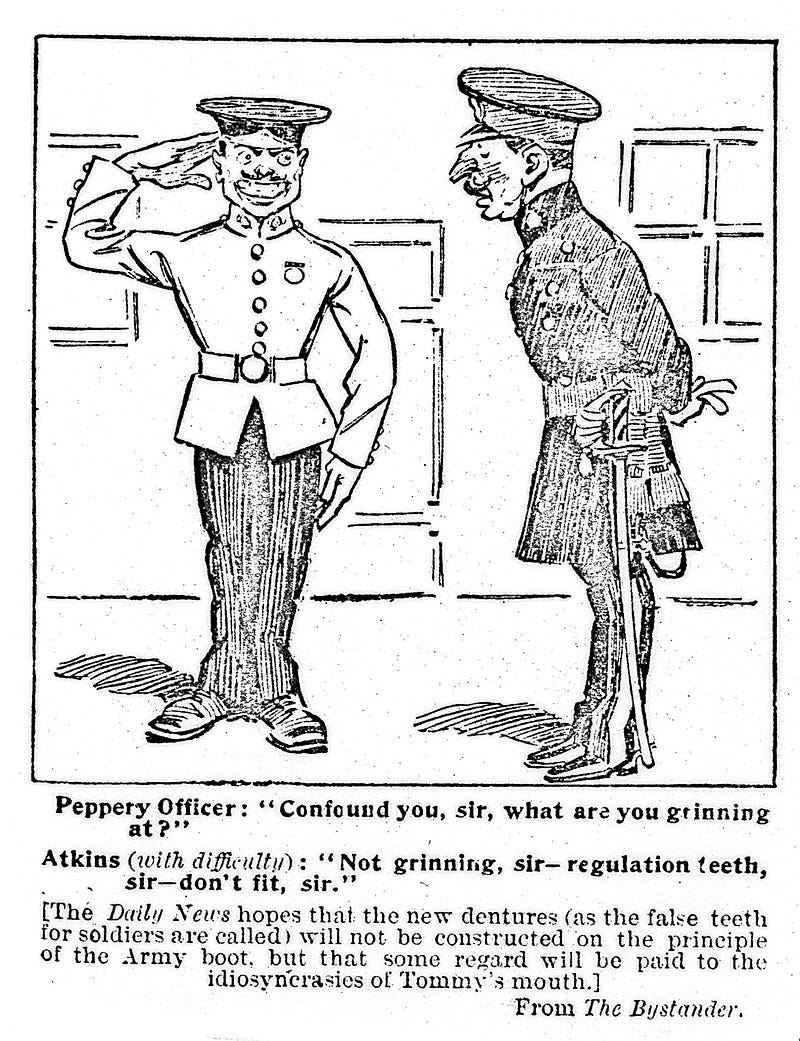Dental Medicine’s Dark Secret
Insurers should have to bend over backwards to court you.

Twenty-six percent of people with untreated cavities, between the ages of 20–44, die. That number is thirteen percent for children 5–19.[1] And yet dental healthcare is not considered essential healthcare under the Affordable Care Act. Why?
To understand this criminal oversight requires stepping back in time. In order to understand the failure of dental healthcare in the United States, we have to first understand where healthcare as a whole went wrong.
In the 1900s, under the eye of Teddy Roosevelt, the United States finally stood up to the corporate robber barons for the first time.
At both state and federal level, the first efforts to curb the excesses of the greedy and wealthy took shape. Antitrust efforts tackled the big manufacturing, transportation, and energy monopolies.
Child labor, overlong workweeks, and deplorable working conditions were also on the table. For the first time in the history of the United States, democracy was actually working properly for the little guy.
The first major push toward some form of healthcare insurance also took place during this time. Previously, employers were directly responsible for injuries to their employees, but the fight to actually exact compensation was a nightmare.
Through the next sixty years, various forms of health insurance were devised, from state-managed systems, to hospital-centered ones. Through the Great Depression, these types of plans became increasingly normalized, as poorer people tended not to be able to afford care.
Hospital services plans reduce for the patient any financial worry which so frequently retards recovery. Nor is it too crass to take cognizance of the fact that the patient without a hospital bill to pay can more readily meet the expense of medical fees.” — Carl Vohs, physician at AMA convention in 1937
It was during World War II that health insurance finally took off, going from 9% population coverage in 1940 to 70% by 1960 (Morrisey). There were two reasons for this: strong government intervention in the labor market (guaranteed strong wages), and powerful organized labor movements.
Since wages were fixed throughout the war, employers needed to attract new employees by actually offering them some sort of incentive. That often came in the form of health insurance. Likewise, unions helped define healthcare during this time as a major condition of employment, making certain that employees were given the best treatment possible. Changes in how the government understands taxation also changed during this time, laying the eventual groundwork for Medicare.
It seemed likely that there would be a continuing trend toward something resembling socialized healthcare in the United States following the war. President Truman had a plan for this, which would have seen a universal health insurance plan enacted in 1945.
Conservative interests fought this plan tooth and nail, so the proponents of nationalized healthcare focused on a group of citizens with broad appeal: the elderly. Who could reject the argument that the elderly deserved good, free, care?
The answer? The rich, the greedy, and the Republicans. Powerful trade unions wanted to maintain low costs for their wealthiest members, and republicans wanted to shunt costs directly onto seniors in the name of “choice”.
What resulted was a sort of three-layer approach to Medicare, complicating matters substantially over a single-payer model.
In the following decades, numerous attempts to bring some form of single payer healthcare back to the table were pushed aside. Instead, private insurance options grew… and grew, and grew.
We wouldn’t see a meaningful expansion of government healthcare until the late 1980s and early 1990s. The next big change wouldn’t take place until the deeply flawed Affordable Care Act under the Obama administration.
How insurance and dentistry got tied up in knots

During the 1960s, when the big push toward Medicare was occurring, dental health was pretty much left by the wayside. This is a trend that continues today.
Just 12 states include the full suite of dental services, including common procedures like crowns and root canals, for Medicaid patients. Three offer nothing at all.[2]
But why? When we know for a fact that dental wellbeing impacts us physically, financially, and socially, why is there still no priority for dental care?
The clue is somewhere between the money made by insurance companies who profit off the pain and suffering of the citizenry, and the money made by dentists who… also profit off of pain and misery.
According to 2009 numbers from the American dental association, specialty dentists can make $305,820 a year, while general dentists are looking at around $192,680. Meanwhile, just one insurance group's profits in 2022 will surpass 4 billion dollars[3]. Those are dollars born on the backs of people who are sick, people who are in pain.
Dental health is an absolute cash-cow for dentists and insurance companies, both of whom have vested interests in maintaining the status quo. Medicare pays dentists lower rates than private health insurance, so few dentists accept Medicare. And that suits private insurance just fine — because without a strong public alternative, private healthcare companies can gauge their customers for billions.
There has to be a fix?
There is: a true public option for all healthcare needs, dentistry included.
We need to undo the mistakes of the 1960s politicians who let dentistry slide from the classification of essential care.
We need to grab back the ideal, so frequently raised during the last hundred years, of a socialized, centralized, and restriction-free public healthcare plan.
It should be your choice to go to a private insurer, but those insurers should have to bend over backwards to court your affections. Presently, you grovel at their polished shoes. Does that seem right to you?
Source References:
Morrisey, Michael A. Health Insurance. Second edition, Health Administration Press ; Association of University Programs in Health Administration, 2014.
Footnotes:
[¹]: https://www.cdc.gov/nchs/data/hus/2019/028-508.pdf
[²]: https://www.theatlantic.com/health/archive/2014/09/why-dont-we-treat-teeth-like-the-rest-of-our-bodies/380703/?
[³]: https://www.forbes.com/sites/brucejapsen/2022/01/19/unitedhealths-medicare-growth-helps-weather-ongoing-pandemic/
